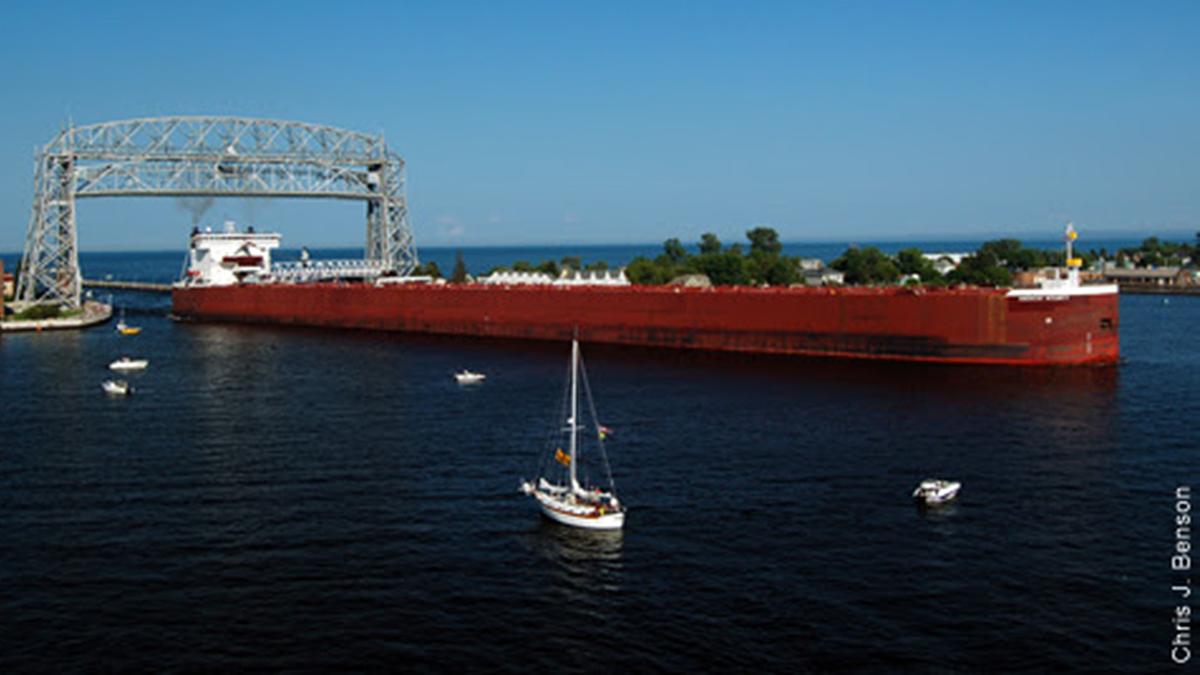The United States and Canadian governments, and stakeholders from industry, academic and nongovernmental organizations will convene for a first-of-its-kind crude oil movement symposium for the Great Lakes-St. Lawrence River Basin on June 8-9, 2017 in Cleveland, Ohio.
“Every day we use products made from crude oil, but we rarely take the time to think about how it gets into our homes,” said New York Sea Grant Associate Director and symposium coordinator Katherine Bunting-Howarth. “This symposium presents an opportunity to learn about how crude oil moves through the Basin, how it affects communities, and the potential impacts to people, communities and the environment from a spill.”
The symposium is hosted by the Great Lakes Sea Grant Network (Illinois-Indiana, Lake Champlain, Michigan, Minnesota, New York, Ohio, Pennsylvania and Wisconsin); the Sea Grant programs of Texas, Louisiana, Florida and Mississippi-Alabama; the Great Lakes Commission and the International Joint Commission.
Symposium topics include regional transportation, how crude moves, economics and a financial analysis of the region’s oil industry, hazards and risk, emergency response and lessons learned from the Great-Lakes and St. Lawrence River region and the New Horizon oil rig explosion in the Gulf of Mexico.
“Crude oil and its refined products take many forms and affect people’s mobility, national security, economy, environmental health and quality of life,” said Minnesota Sea Grant Maritime Extension Educator and risk panel moderator Dale Bergeron. “We hope to create a meeting at which all participants can have an honest conversation about risk and hazard.”
The extraction, refinement and distribution of crude oil within the Great Lakes Basin moves by truck, by rail and by pipeline. Although pipelines are the preferred and more heavily used mode of transportation, there are objections to their use and to specific routes due to human health and environmental concerns. A 2016 headline from Forbes says it well: “Pipelines: The Worst Way to Move Oil, Except for All the Rest.”
A symposium panel on different perspectives of risk includes presentations and discussions on transportation risk, human health and societal risks, and risk from the industry and insurance perspectives. “It’s not only risk we have to define, we have to define how we look at cost and benefits,” said Bergeron. “And, how we look at moving risk from one area to another.”
The symposium is free, but registration is required and space is limited. There will be a live webinar and call in and symposium materials will be available online.
“Sea Grant extension educators are regularly facilitators among and between industry, regulators, and the public on a host of critical water quality/safety issues,” said Bergeron. “All of us together are smarter than any of us alone.”
ADDITIONAL INFORMATION:
Symposium webinar information
http://www.glslcrudeoiltransport.org/symposium
Day one webinar registration
Meeting number: 808 125 205 / Meeting password: oilspill
And then, join by phone: 1-888-848-0190
Code: 8096626#
Day two webinar registration
Meeting number: 808 271 893 / Meeting password: oilspill
And then, join by phone: 1-888-848-0190
Code: 8096626#
“Crude Move Symposium: Oil Transportation Infrastructure, Economics, Risk, Hazards and Lessons Learned.”
June 8-9, 2017
Thursday 1:00 – 5:30 p.m.
Friday 8:30 a.m. – 2:00 p.m.
Great Lakes Ballroom
Drury Plaza Downtown Cleveland
1380 East Sixth Street
Cleveland, OH 44114
A draft agenda is available here.
Crude Move Great Lakes 2016 Webinar Series
https://ohioseagrant.osu.edu/news/calendar/2016/03/03/afg5r/crude-move-webinar-series
